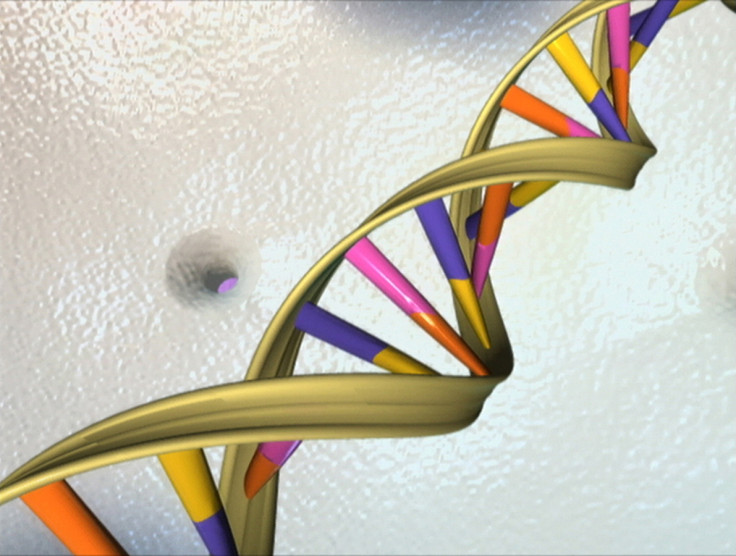First human epigenome map unveils code behind DNA that can help fight diseases

Scientists have created for the first time a map of the human epigenome which
can turn on or silence individual genes in the DNA.
A decade after the human genome was sequenced, the National Institutes of Health's Roadmap Epigenomics Consortium has come up with a detailed epigenome map for 111 types of human cells and tissues.
The research launched in 2008 generated 2,805 genome-wide datasets, encompassing a total of 150 billion sequencing reads, corresponding to a 3,174-fold coverage of the human genome.
The epigenome varies vastly from one cell type to another and, when disrupted, can play a role in the onset of many diseases, like cancer, Alzheimer's disease, diabetes and autism.
"We've only scratched the surface of the human epigenome, but this massive resource marks the beginning of an era," said one of the principal investigators of the epigenome mapping project, Ting Wang, PhD, assistant professor of genetics at Washington University School of Medicine in St Louis. "We can now begin to describe humans in molecular detail.
"We also can look closely at the epigenetic differences between cell types. We don't yet understand what those differences mean or what epigenetic changes drive cell specialisation or the initiation of disease. But that's where we're headed. This resource opens up many new doors in biology and the biomedical sciences."
To access and analyse the enormous amount of data, Wang and his Washington University colleagues developed the WashU Epigenome Browser that allows for faster and user-friendly searches of the data.
Using the browser, scientists worldwide can easily search to study the epigenomes of brain cells from Alzheimer's patients to see how they differ from those of healthy patients.
Epigenome role in diseases
Epigenomes play a major role in precision medicine as they are dynamic and potentially can be altered by changes in lifestyle, such as diet and exercise or drugs.
In one of the papers published in Nature Communications, graduate student GiNell Elliott found over 18,000 regions of the genome in which DNA is partially methylated, an epigenetic mark that typically silences gene expression.
Diseases including cancer result from a disruption in DNA methylation.
In other work, graduate student Rebecca Lowdon found that the skin cells do not share a strong epigenetic signature, highlighting the diverse nature of epigenetic markers within the same organ or tissue.
One of the studies showed that for the first time that brain cells from people who died with Alzheimer's disease had epigenetic changes in DNA involved in immune response, opening up a new way of treatment.
Epigenetic signature of different kinds of cells being unique, the researchers could predict with nearly 90% accuracy where metastatic cancer originated.
Manolis Kellis, a professor of computer science and a member of MIT's Computer Science and Artificial Intelligence Laboratory and of the Broad Institute, led the effort to integrate and analyse the massive datasets produced by the project.
Researchers distinguished 15 different epigenomic signatures, or chromatin states, reflecting the varying active, repressed, poised, transcribed and inactive regions of the genome in each cell type studied.
The researchers then studied how these chromatin states varied across different types of cells and tissues. The two million regulatory regions were grouped into 200 sets which appeared to be acting in a coordinated manner across different types of cells.
Out of this, 100 modules contained common sequence patterns, possibly indicating ability to work together.
Trait signatures
By comparing the epigenome of genetic variants associated with different human traits and diseases, the team produced a map of the tissue and cell types that are most relevant to each trait or disease.
The researchers identified enhancer signatures for 58 different traits. In embryonic stem cells they found the signatures for height; in brain tissues the signature for attention deficit disorder; in pancreatic islets the indicator for fasting glucose.
"This unbiased view allows researchers to focus on relevant cells and tissues that may have been otherwise overlooked when studying a particular disease," Kellis says. "The regulatory circuitry of a diverse range of cells can contribute to diseases that manifest in seemingly unexpected organs."
What is the epigenome?
The human genome is the sequence of all the DNA on chromosomes. The DNA is identical in every cell of the body.
But the epigenome differentiates the cells and ensures heart muscle cells do not produce brain chemicals or neurons do not make muscle fibres.
Where the human genome is the blueprint for an individual, the epigenome is the underlying cross-outs and underlinings of that blueprint.
They are the chemical markers attached to the DNA.
If someone's genome contains DNA associated with cancer but that DNA is "crossed out" by molecules in the epigenome, for instance, the DNA is unlikely to lead to cancer.
Epigenetic differences are also the reason why identical twins, who have identical DNA, do not always develop the same genetic diseases, including cancer.
© Copyright IBTimes 2025. All rights reserved.





















